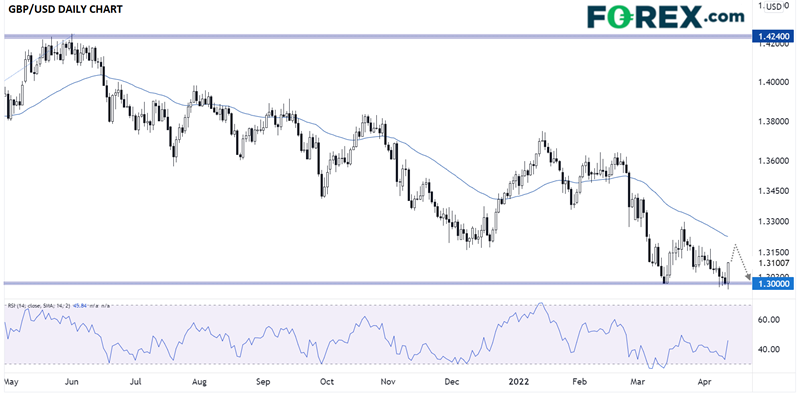After comments from the White House that inflation would be “extraordinarily elevated”, traders were surprised when Tuesday’s Consumer Price Index (CPI) report came in roughly in-line with expectations at “”only” 8.5%.
Perhaps the Biden administration got its wires crossed and was instead referring to Wednesday’s Producer Price Index (PPI) report? Prices on a wholesale level rose a staggering 11.2% year-over-year in March, well above the 10.6% reading expected by traders and economists and the highest level on record for the indicator (dating back to November 2010). Digging into the details of the report, energy prices surged by 5.7% month-over-month, while food prices jumped 2.4%. Even stripping out food, energy, and trade services, the core PPI showed prices rising 7% year-over-year.
For policymakers, yesterday’s hot PPI reading may be even more worrying than Tuesday’s CPI reading. After all, PPI is seen as a forward-looking measure of inflation because it tracks the prices for goods and services up the pipeline that will eventually reach consumers. In other words, Wednesday’s PPI report suggests that inflation at a consumer level is likely to get worse before it gets better.
Market to watch: GBP/USD
Notably, the release of the PPI report marked yesterday's US session high for Treasury yields, but the trend is still toward higher yields across the curve as traders price in not only a 50bps interest rate hike from the Fed at its next meeting in May, but also another 50bps increase in June (~90% odds of each according to the CME’s FedWatch tool) as the central bank tries to aggressively get ahead of price pressures.
After dipping to a 17-month low below 1.30 on Tuesday, GBP/USD is bouncing back strongly. Between the (near-term) failed breakdown catching momentum traders offside and the declining yield spread between short-term US and UK bonds, cable could rally further toward the 50-day EMA near 1.3200 as we head through the latter half of the week:
Source: TradingView, StoneX
That said, given the long-term downtrend and likelihood of the Fed raising rates more aggressively than the BOE, traders are likely to view any near-term rallies as counter-trend moves as long as GBP/USD remains below the 1.3300 swing high. Every trend has its ups and downs, but there’s not enough to suggest that the big rally in GBP/USD marks the bottom of the downtrend in GBP/USD yet!


